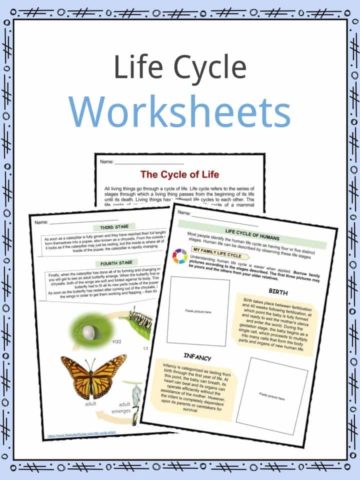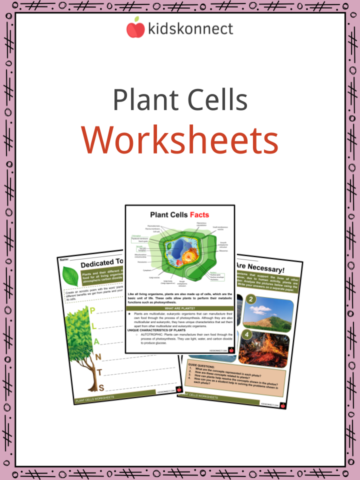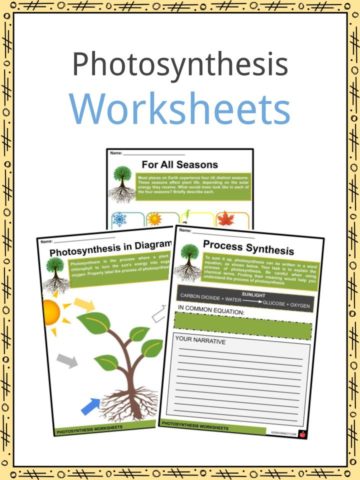Download This Sample
This sample is exclusively for KidsKonnect members!
To download this worksheet, click the button below to signup for free (it only takes a minute) and you'll be brought right back to this page to start the download!
Sign Me Up
Table of Contents
Plants are remarkable organisms in that they can produce their own food and energy and even provide us with oxygen. They also have a distinctive ability to absorb and store carbon dioxide from the atmosphere. The question is, why can’t we value them more?
See the fact file below for more information on the Plant, or you can download our 30-page Plant worksheet pack to utilize within the classroom or home environment.
Key Facts & Information
WHAT ARE PLANTS?
- Plants are living organisms characterized by being multicellular and eukaryotic. Aside from this, plants are also known to be autotrophic, meaning they are self-feeders. Below are some of the properties of life and how plants observe them.
PROPERTIES OF LIFE
- As living organisms, plants also exhibit different properties of life, albeit differently from animals and other living organisms.
- The following are the properties of life: order, response to stimuli, growth and development, reproduction, homeostasis, and energy processing.
- ORDER: Unicellular and multicellular organisms are highly organized. Plants, as multicellular organisms, are made up of cells that form together to become tissues. Tissues will then become organs, and organs make up an organism.
- This level of organization allows an organism to perform all of its functions.
- RESPONSE TO STIMULI: All organisms are affected by their environment and other living organisms. This sensitivity allows them to survive in their environment.
- A good example of this is the plant Mimosa pudica. This plant, when touched, will fold and droop.
- Plants respond to stimuli through their tropic movements, and plants can display either a positive or negative response.
- A positive response is when a plant moves toward the stimulus and a negative response is when the plant moves away from the stimulus.
- There are different stimuli and plants respond to them differently. Heliotropism or phototropism is a plant’s response to light. Thigmotropism to touch. Gravitropism, sometimes called geotropism, is a plant’s response to gravity. Chemotropism to chemicals. Thermotropism to temperature, and hydrotropism to water.
- REPRODUCTION: Plants reproduce either sexually or asexually. In sexual reproduction, seeds are necessary to breed new plants. Meanwhile, in asexual reproduction, there’s no need for seeds to reproduce.
- There are a lot of methods of asexual reproduction. These include budding, fragmentation, spore formation, and vegetative propagation.
- On the other hand, sexual reproduction is participated by the reproductive organs of the plant- flowers. The stamen is the male reproductive part and the pistil is the female counterpart.
- GROWTH AND DEVELOPMENT: A life cycle is a series of events and changes an organism undergoes throughout its life until the production of a new individual of the same organism.
- A life cycle also shows us how an organism grows and develops. Growth and development, although always associated with one another, are different. Growth is defined as an increase in size and mass, while development is the changes in an organism as it increases in size and mass.
- HOMEOSTASIS: Defined as the balance in the internal environment of an organism. Plants, like other organisms, will be affected by their external environment. To prevent the imbalance that may lead to sickness or death, they must adapt to changes in their environment.
- To do this, plants have distinctive structures or modifications that allow them to survive in hostile environments or even the smallest changes in the environment. An example is the cacti. Since these plants reside in deserts, they have spines as leaves that allow them to retain their water content.
- ENERGY PROCESSING: Different organisms have different methods of acquiring and processing energy. Plants are known as self-feeders, producers, or autotrophs. This means that they are capable of making their own food.
- Plants, through the process of photosynthesis, can make use of solar energy and inorganic materials to make organic materials such as glucose.
- At the same time, plants also produce oxygen as a waste product of photosynthesis. This benefits living organisms that need oxygen to survive.
THE KINGDOM PLANTAE
- The organisms under Kingdom Plantae are diverse. Its members range from tiny mosses to giant trees. Despite this, all organisms under Kingdom Plantae have a lot of things in common.
- All plants are multicellular, meaning they are composed of more than one cell.
- Plants are also eukaryotic organisms. This means that the cells of the plants contain a nucleus and other membrane-bound organelles.
- Most plants contain pigments such as chlorophyll and carotenoid. Chlorophyll allows the plant to trap light energy and use it to manufacture its own food.
- This also means that plants are mostly self-feeders or autotrophic organisms. Through the process of photosynthesis, plants are able to convert inorganic material to food.
- Plants, aside from having chlorophyll and other pigments, also have in their cell a structure known as the cell wall.
- Plants, compared to animals, can also use inorganic forms of nitrogen, which makes them not need an external source of protein.
- All members of Kingdom Plantae can be divided into two groups based on the presence or absence of vascular tissues that transport water and nutrients within the plant. Vascular tissue is composed of xylem (transports water and dissolved ions) and phloem (transports food).
- Plants with vascular tissues are called vascular plants, while those without are called non-vascular plants.
- Vascular plants are well suited to life on land. Also, the presence of vascular tissue allows them to grow tall. Tracheophytes are vascular plants. They also have roots, stems, and leaves.
- The roots of tracheophytes help the plant anchor into the soil. They also help the plant absorb water and nutrients from the environment. Water and nutrients move through the vascular tissues to the stem, which transfer the necessary materials to the leaves.
- Meanwhile, non-vascular plants are well suited to damp and shady environments. Non-vascular plants such as mosses, liverworts, and hornworts mostly get their water and nutrients from the air through their surface such as the leaves.
- Due to the lack of vascular tissues, non-vascular plants cannot grow as tall as vascular plants.
- They mostly grow up to a few centimeters in height only. Also, since they do not have roots, these plants can grow on any surface, such as rocks, walls, and pavements.
PLANT ANATOMY
- A characteristic common to all living organisms is order or organization. As such, plants also follow the hierarchical organization of life, with the cell as the basic unit of life. Cells form tissues, tissues form organs, and organs form organ systems.
- In this fact file, we will focus on the organ systems and organs of vascular plants.
- Let’s begin with the organ systems. Vascular plants have two organ systems – root and shoot systems. The root system is found below the ground, while the shoot system grows above the ground.
- The root system includes roots, tubers, and rhizomes.
- Roots are structures that extend underground and anchor the plant into the ground. It creeps and grows in the spaces in the soil, absorbing water and nutrients.
- Tubers, like potatoes, serve as storage for starch and energy.
- Rhizomes are stems that grow horizontally below ground. This provides support and stability to the plant. They can also give rise to new shoots.
- The shoot system includes two organs – vegetative and reproductive.
- The vegetative organs are the stems and leaves. The stem serves as the central structure of a plant. It holds all the other organs above ground and connects them to the root system.
- The stem allows nutrients and minerals to flow up and down the root and shoot systems through its vascular tissues.
- The leaves are connected to the stem through a structure called the petiole, which is like a secondary and smaller stem.
- Leaves are responsible for providing the plant with most of its nutrients through the process of photosynthesis. It contains special structures such as stomata, guard cells, and the majority of chlorophyll to perform this special function.
- Leaves also connect to the vascular tissues through their venations.
ECOLOGICAL ROLES OF PLANTS
ENERGY TRANSFER
- Sun is our ultimate source of energy and plants directly benefit from solar energy through the process of photosynthesis.
- Plants are producers because they make their own source of food energy. Thus, they are found at the base of the ecological pyramid where all other living organisms rely on energy.
NUTRIENT CYCLES
- Plants are involved in all nutrient cycles but we will only focus on the five major nutrient cycles.
- In carbon and oxygen cycles, plants through the processes of photosynthesis and respiration help recycle carbon and oxygen.
- Plants produce oxygen for aerobic organisms such as humans. Plants also make use of atmospheric carbon dioxide as an ingredient for photosynthesis.
- Carbon dioxide is sequestered in all parts of plants, particularly the stems, which is why it is important to preserve old trees, as they have as much carbon stored in their structure as their age.
- Plants participate in the water cycle through transpiration. Plants also affect how much water the ground holds, preventing excessive runoff.
- In terms of the nitrogen cycle, plants can readily use inorganic forms of nitrogen. Legumes also have nitrogen-fixing bacteria in their roots that allow for ammonification to take place.
- Plants are very important organisms. They provide us with energy, nutrients, and even oxygen to breathe.
- Plants also make use of carbon dioxide in the atmosphere which at this time continues to affect the global climate and all organisms living on Earth.
Plant Worksheets
This fantastic bundle includes everything you need to know about the Plant across 30 in-depth pages. These ready-to-use worksheets are perfect for teaching kids about the Plant, a living organism that belongs to the kingdom Plantae and a primary producer that uses photosynthesis to convert light energy into chemical energy in the form of organic compounds.
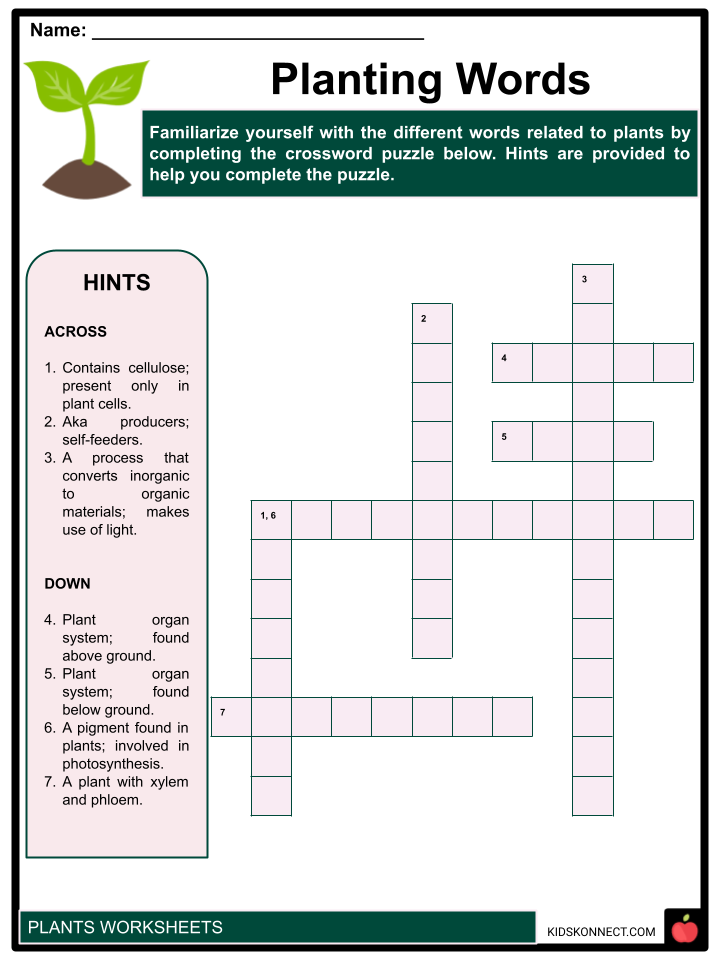
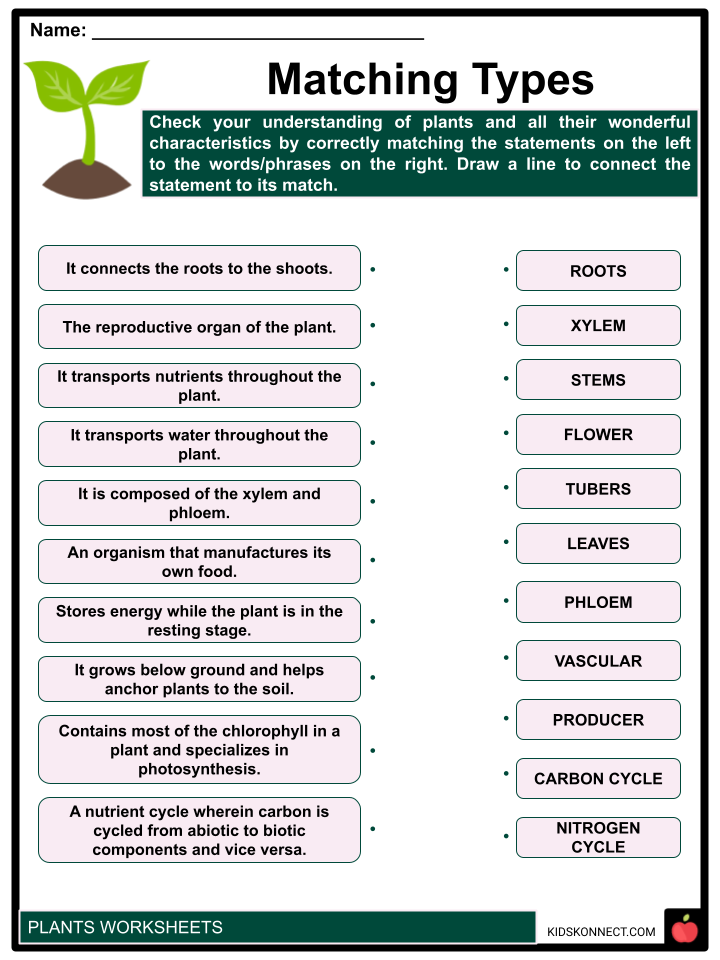
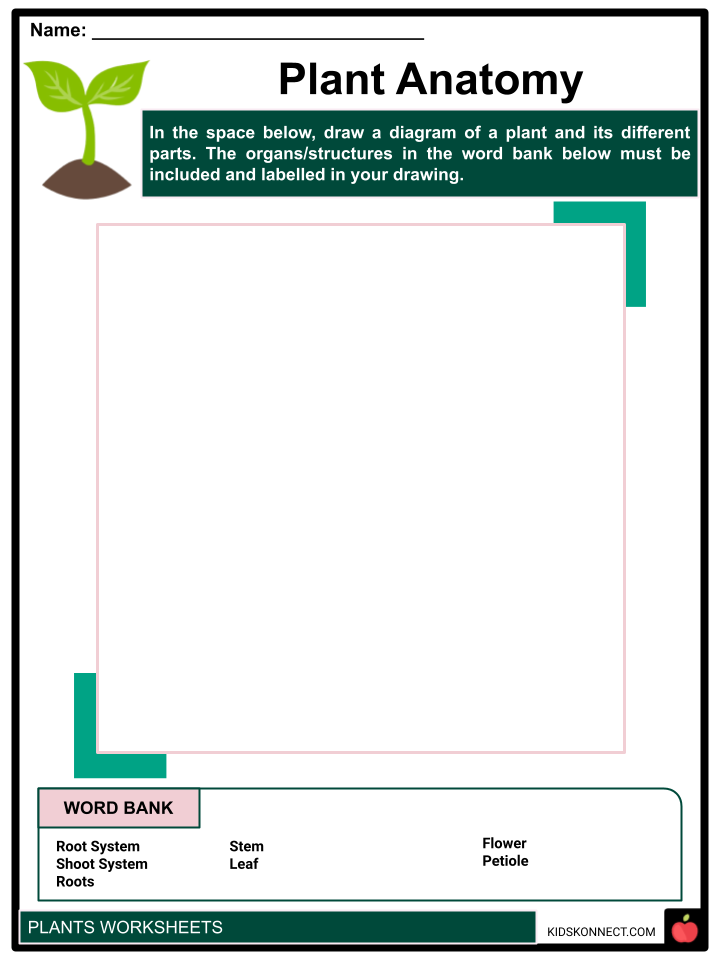
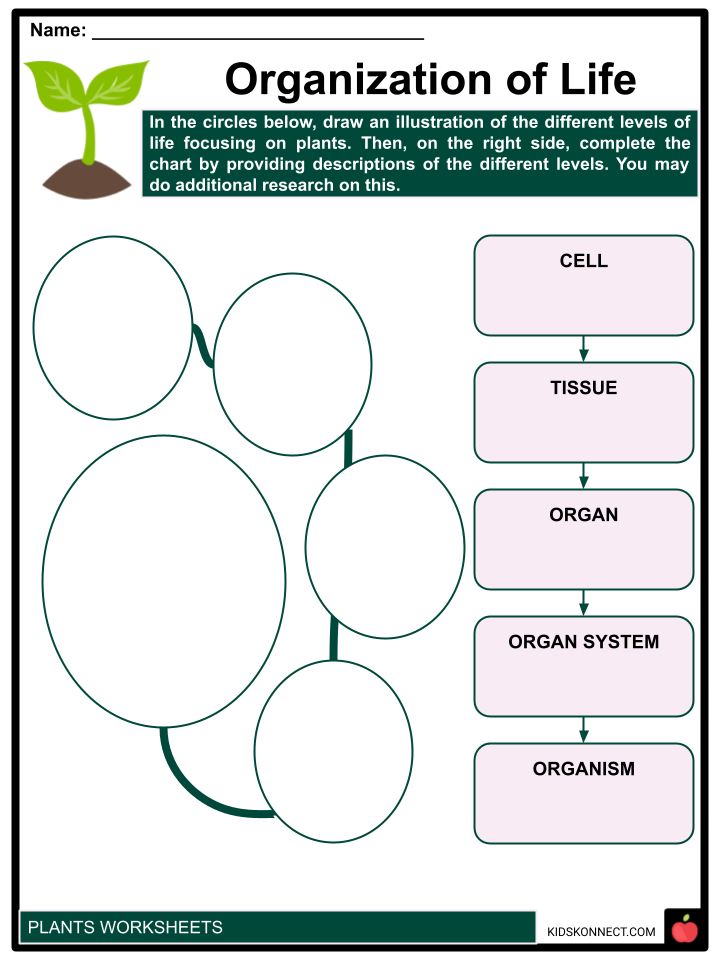
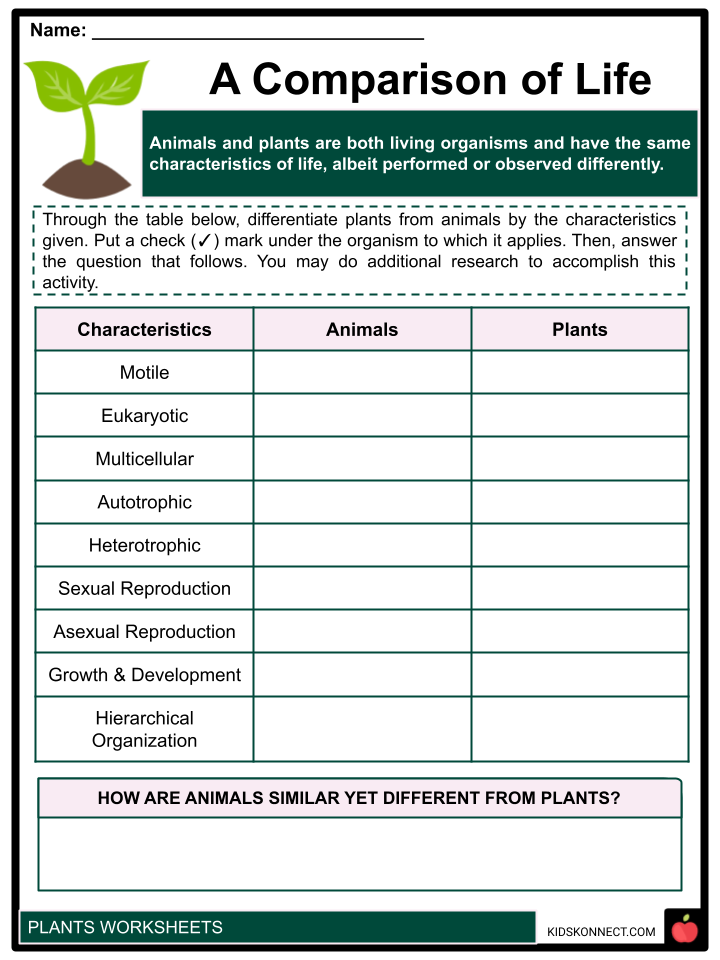
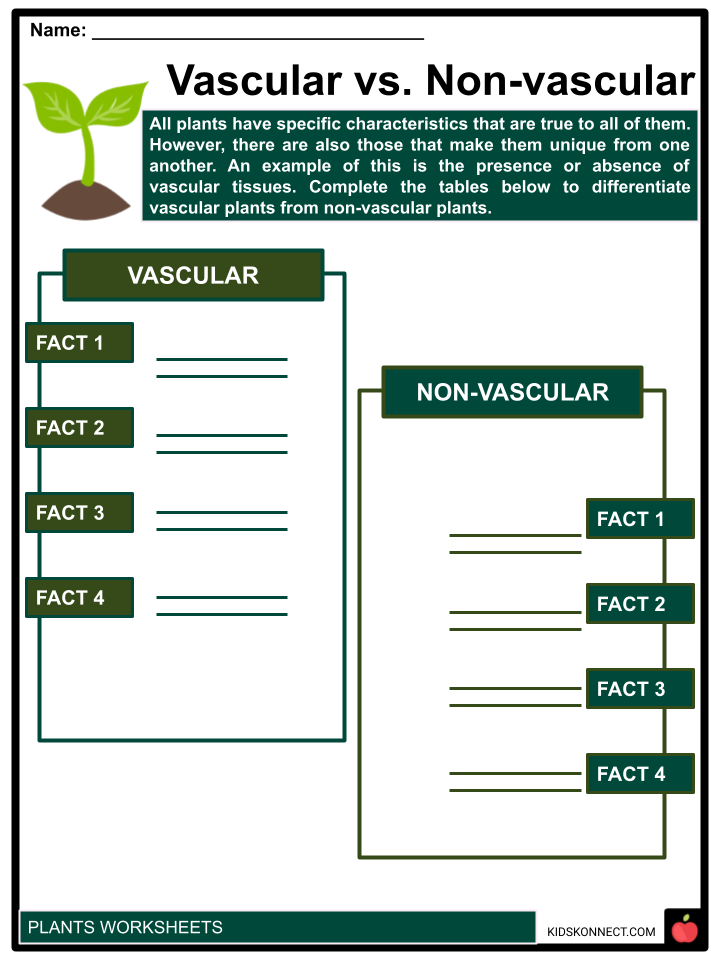
Complete List of Included Worksheets
Below is a list of all the worksheets included in this document.
- Plants Fact File
- Planting Words
- Matching Types
- Plant Anatomy
- Organization of Life
- A Comparison of Life
- Vascular vs. Non-vascular
- Harvesting Benefits
- Busy Bees
- I Got The Power!
- A Plantless World
Frequently Asked Questions
What is photosynthesis, and how does it occur in plants?
Photosynthesis is the process by which plants convert light energy from the sun into chemical energy from organic compounds. It occurs in the chloroplasts of plant cells and involves the conversion of carbon dioxide and water into glucose (sugar) and oxygen, using light energy and the green pigment chlorophyll. The glucose produced in photosynthesis provides energy for the plant and is also used as a building block for other organic compounds.
How do plants reproduce?
Most plants reproduce through seeds, which are produced in flowers. Some plants, such as ferns, mosses, and liverworts, can reproduce asexually through vegetative propagation, such as runners, rhizomes, or spores. In flowering plants, sexual reproduction occurs when the male gamete (pollen) from the stamen fertilizes the female gamete (ovules) in the ovary, forming seeds.
What are the different types of plant roots?
Plants have different types of roots depending on their environment and function. The three main types of plant roots are:
- Taproots: found in many dicotyledonous plants, such as carrots and dandelions. These roots are large and fleshy and serve as a storage organ for food and water.
- Fibrous roots: found in many monocotyledonous plants, such as grasses and lilies. These roots are thin and hair-like, abundant in number to absorb water and nutrients from the soil.
- Adventitious roots: these roots develop from stems, leaves, or any other part of the plant and are often found in epiphytes (plants that grow on other plants), such as orchids and bromeliads.
What are the functions of leaves in a plant?
Leaves are an essential part of a plant and perform several vital functions, including:
- Photosynthesis: leaves are the main site of photosynthesis in plants and contain chloroplasts necessary for converting light energy into chemical energy.
- Gas exchange: leaves take in carbon dioxide from the air and release oxygen through tiny pores called stomata.
- Water balance: leaves release water vapor (transpiration) to regulate the plant’s water balance and help transport water and minerals from the roots to the rest of the plant.
How do plants respond to their environment?
Plants respond to their environment in several ways, including:
- Phototropism: the bending of shoots towards the light to maximize exposure to sunlight for photosynthesis.
- Geotropism: the growth response of roots and stems to gravity, causing roots to grow downwards and stems from growing upwards.
- Hydrotropism: the growth response of roots towards moisture.
- Thigmotropism: the growth response of stems and branches towards physical support or touch.
Link/cite this page
If you reference any of the content on this page on your own website, please use the code below to cite this page as the original source.
Link will appear as Plant Fact & Worksheets: https://kidskonnect.com - KidsKonnect, January 31, 2023
Use With Any Curriculum
These worksheets have been specifically designed for use with any international curriculum. You can use these worksheets as-is, or edit them using Google Slides to make them more specific to your own student ability levels and curriculum standards.

